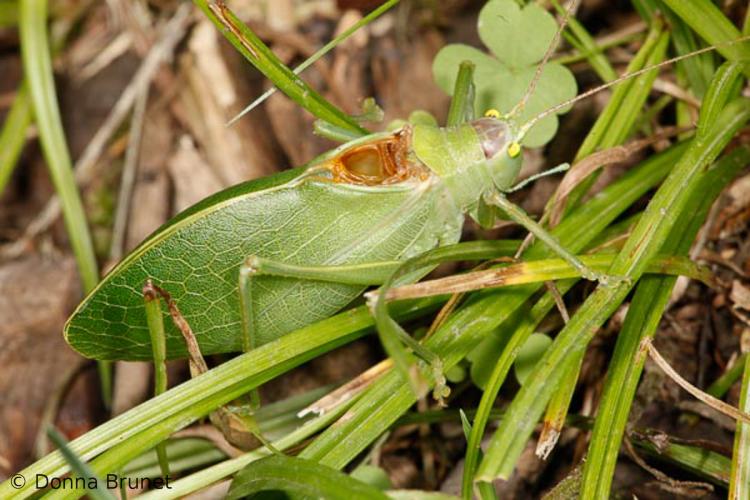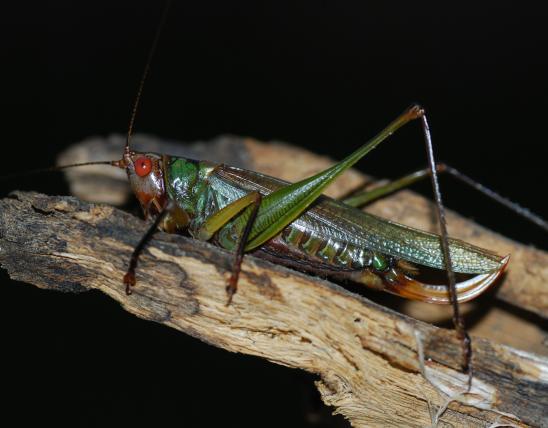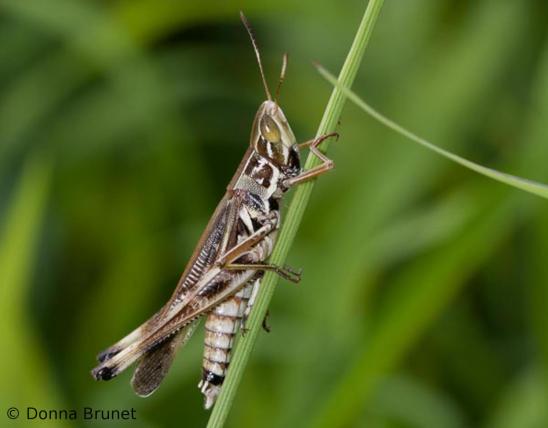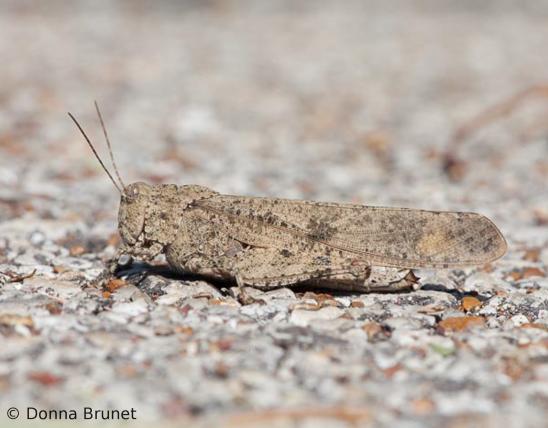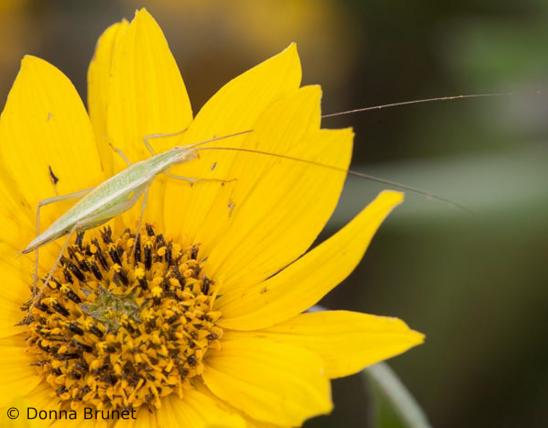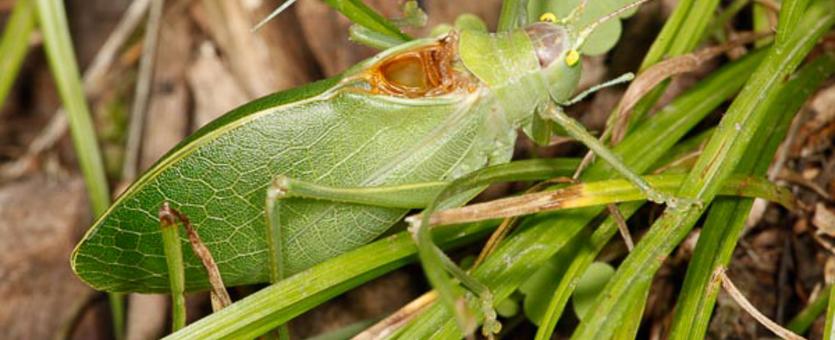
The green wings of the common true katydid look almost exactly like leaves.
Katydids, as a group, are close relatives of grasshoppers and crickets and are distinguished from them by their long antennae; vertically positioned wings that form a roof over the body; and the flattened, bladelike ovipositor that protrudes from the end of the female’s abdomen.
This particular species of katydid is identified by the humplike cup formed by the wings; the many prominent wing veins; and two grooves running side-to-side on the pronotum (the collarlike plate between the head and wings).
Even if you never see these katydids, you are certain to hear them on hot summer nights, as they rasp their loud mating calls from high in trees: “Katy did! Katy didn’t! Katy did! Katy didn’t!”
Similar species: This is only one of several species of katydids in Missouri. Katydids (as a family) are also sometimes called long-horned grasshoppers, long-horned meadow grasshoppers, or bush crickets.
Learn more about this and other katydids on their group page.
Length: to about 2½ inches (not counting legs, wings, or antennae).

Statewide.
Habitat and Conservation
This species of katydid is arboreal: They live in trees. Because they generally remain in high treetops, people rarely see them until cool weather in autumn makes them clumsy and causes them to land, more and more, on the ground.
Common true katydids are slow walkers, and they tend to jump only when frightened. The wings function mainly as parachutes, breaking their fall after they leap.
Food
Common true katydids eat leaves in the deciduous trees they inhabit.
Status
Common.
Life Cycle
The raucous, repetitive, nighttime rasping of both males and females are mating calls. Late in the season, the pregnant female uses her sword-shaped ovipositor to insert eggs into bark crevices in trees, and the eggs overwinter there, hatching in spring.
As with other insects, this species molts through a number of immature, wingless stages before a final molt in which they emerge as winged, sexually mature adults. There is one brood (generation) per year.
Human Connections
Missouri’s nighttime chorus of insect sounds has been likened to a symphony. If that’s the case, then katydids certainly perform some of the loudest solos during our hottest summer nights.
Ecosystem Connections
Common true katydids are leaf eaters and are preyed upon by numerous birds, snakes, and other predators that hunt in treetops. One clue that they might be preyed upon heavily is their exquisite camouflage: Hiding from something is very important to them!
